Libraries often contain many thousands of books, magazines, CD-ROMs, etc. In fact, some of the largest libraries (e.g. The British Library in the UK) contain well over 100 million items - that's a lot of things to keep track of!
For this reason, libraries use computer-based systems to keep a record of their books, and of the people who borrow the books.
A computerised library database allows for:
For this reason, libraries use computer-based systems to keep a record of their books, and of the people who borrow the books.
A computerised library database allows for:
- Quick and easy searching for books
- Easy printing out of book lists / labels
- Easy tracking of book loans (who has it, when it was borrowed, etc.)
- Automatic printing of warning letters for borrowers who have not returned books

International Standard Book Number (ISBN)
Every published book has an International Standard Book Number (ISBN).
The ISBN is typically printed on the back of the book in numeric form, and as a barcode (to allow for quick data entry)
The ISBN is typically printed on the back of the book in numeric form, and as a barcode (to allow for quick data entry)

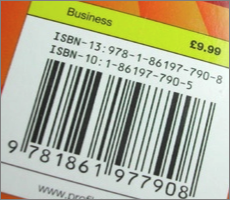
It's important to note that a book's ISBN cannot be used as the primary key field in a library's book database.
Why? Because if you have several copies of the same book, they will all have the same ISBN. And the primary key must be unique.
For this reason, library books are given a unique ID number / code.
Why? Because if you have several copies of the same book, they will all have the same ISBN. And the primary key must be unique.
For this reason, library books are given a unique ID number / code.
The Book Database
A typical library book database might contain:
- Book ID (number / text)
- Title (text)
- Author (text)
- Publisher (text)
- ISBN (number)
- Fiction / non-fiction (boolean)
- Genre / category (text)
- Cost (number)
- Date of purchase (date)
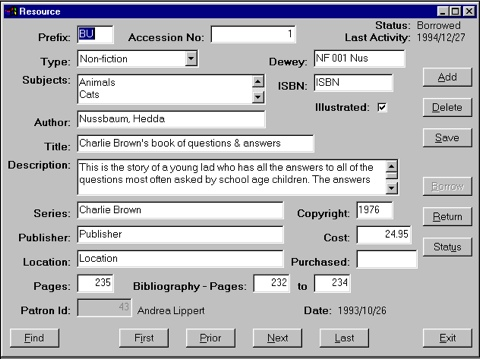
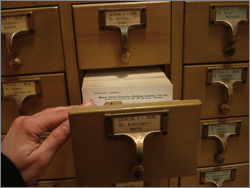
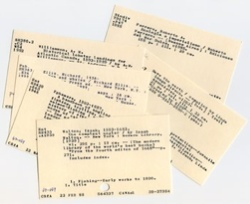
Before computers, libraries had to use manual paper-based systems.
Details of books were recorded on small cards which were then kept in small drawers (in order of author's name, for fiction books, or in order of subject, for non-fiction books)
You can probably imagine that keeping these cards up-to-date, and making sure non got lost, or put back in the wrong place, was a huge job!
Details of books were recorded on small cards which were then kept in small drawers (in order of author's name, for fiction books, or in order of subject, for non-fiction books)
You can probably imagine that keeping these cards up-to-date, and making sure non got lost, or put back in the wrong place, was a huge job!
The Borrower Database
A typical library borowwer database might contain:
- Borrower ID (number / text)
- Name (text)
- Phone number (text)
- Address (text)
- E-mail address (text)
- Date of birth (date)
Borrowers are commonly given library cards that have their details printed on, so that they don't have to remember their ID.
Most cards also have the borrower's ID in the form of a barcode for quick and easy data input when borrowing books
Most cards also have the borrower's ID in the form of a barcode for quick and easy data input when borrowing books
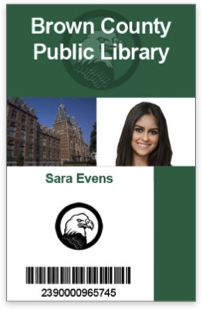

The Loans Database
The loans database has records added to it when someone borrows a book. The loans database links together records from the books database and the borrower database.
A typical loans database would contain:
A typical loans database would contain:
- Book ID (number / text)
- Borrower ID (number / text)
- Date of loan (date)
- Due date (date)
Due date is before Today
When a late record is found, the borrower ID can be used to link to the borrower's record. The borrower's address / e-mail can then be used to send out an automatic reminder letter.
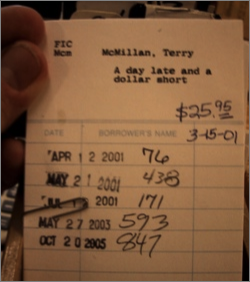
As with the manual book catalogue mentioned above, before computers all loans were recorded using a paper-based, manual system
